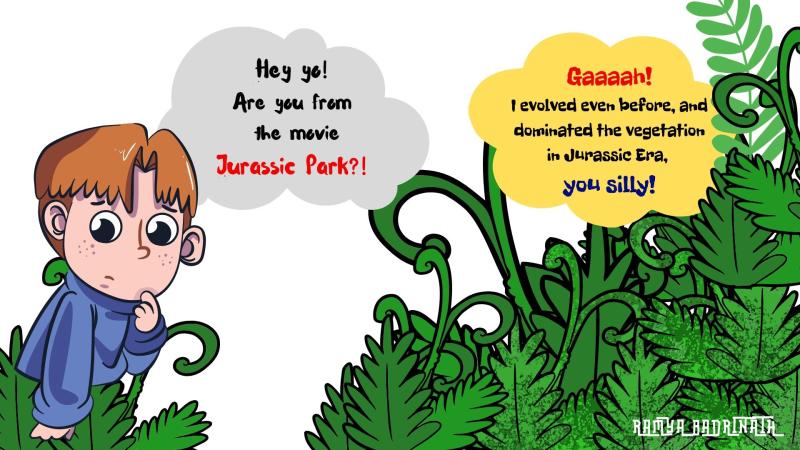
If you are a fan of the movie Jurassic Park, you would have noticed the feathery-leaved massive plants, commonly called ferns. Also known as pteridophytes, they once dominated the flora of the Earth.
Billions of years ago, the first organisms that could photosynthesise, the algae, appeared in the water. They were simple structures, devoid of leaf, stem and root systems. With further evolution, mosses resulted from them. Life slowly migrated from water to land. Both algae and mosses are devoid of a vascular system—xylem and phloem—that conduct water and food. Ferns were the first to have a well developed vascular system.
Primitive ferns lacked leaves, appearing as green sticks emerging from the soil. Then, leaves evolved to adapt to various dry to wet or shady habitats. Ferns were also devoid of flowers but propagated over long distances through their minute powdery spores, which survived the adverse climatic conditions of that time. In the Carboniferous period, about 300 million years ago, ferns constituted the major part of vegetation on Earth.
Since ferns are very sensitive to changes in the climate, they are good indicators of ecological conditions. They can be used to analyse the environmental conditions of their habitats. There are also undiscovered medicinal constituents hidden in these ferns.
In a disturbed or destroyed environment, ferns are the first to colonise. Ferns give shade and suitable substratum for germination of seeds. Hence, they paved the way for the establishment of the flowering plants we see today. Researchers are now carrying out genetic analysis of ferns to decipher the mystery of plant evolution.
Now, flowering plants form a significant part of the Earth’s vegetation. They outnumber ferns by over 25 times. In the Cretaceous period, about 65 to 144 million years ago, drastic changes in climatic conditions, such as drier environments, were favourable for the emergence of flowering plants. They diversified and broke the empire of pteridophytes. Many of the ferns were buried and now form the primary source of coal.
There are more than 12,000 species of ferns on Earth today. Next time you spot a fern, take a moment to glimpse into the past.





